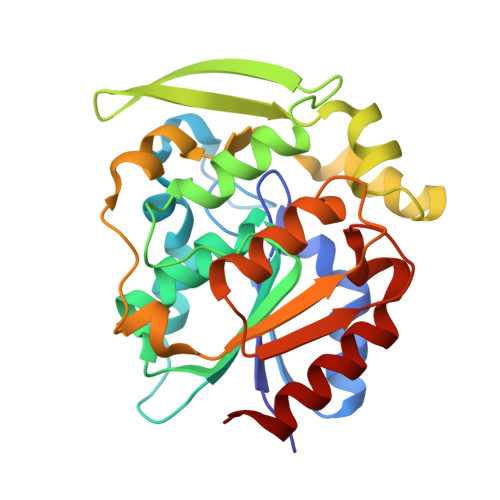Atomic resolution crystal structures and quantum chemistry meet to reveal subtleties of hydroxynitrile lyase catalysis
Schmidt, A., Gruber, K., Kratky, C., Lamzin, V.S.(2008) J Biological Chem 283: 21827-21836
- PubMed: 18524775
- DOI: https://doi.org/10.1074/jbc.M801056200
- Primary Citation of Related Structures:
3C6X, 3C6Y, 3C6Z, 3C70 - PubMed Abstract:
Hydroxynitrile lyases are versatile enzymes that enantiospecifically cope with cyanohydrins, important intermediates in the production of various agrochemicals or pharmaceuticals. We determined four atomic resolution crystal structures of hydroxynitrile lyase from Hevea brasiliensis: one native and three complexes with acetone, isopropyl alcohol, and thiocyanate. We observed distinct distance changes among the active site residues related to proton shifts upon substrate binding. The combined use of crystallography and ab initio quantum chemical calculations allowed the determination of the protonation states in the enzyme active site. We show that His(235) of the catalytic triad must be protonated in order for catalysis to proceed, and we could reproduce the cyanohydrin synthesis in ab initio calculations. We also found evidence for the considerable pK(a) shifts that had been hypothesized earlier. We envision that this knowledge can be used to enhance the catalytic properties and the stability of the enzyme for industrial production of enantiomerically pure cyanohydrins.
Organizational Affiliation:
EMBL Hamburg c/o Deutsches Elektronen Synchrotron, Notkestrasse 85, Hamburg, Germany. andrea@embl-hamburg.de




















